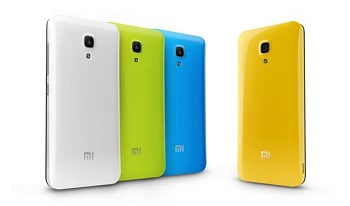SABIC’s Innovative Plastics business enabled mobile internet company Xiaomi to develop its Mi2A smartphone that addresses growing consumer requirements such as thinner, more durable walls, and an antenna-integrated frame.
Since their inception, manufacturers have worked to make smartphones increasingly thin, compact and lightweight to keep pace with growing consumer demands. In addition, an emphasis on aesthetics has led consumers to increasingly value the look and feel of a device, alongside its functionality, further challenging OEMs to design a phone that is smaller yet visually appealing. Xiaomi selected SABIC’s LNP™ THERMOCOMP™ compound, LNP THERMOCOMP LDS and LEXAN™EXL resin to create a smartphone that met complex technical specifications without sacrificing design and aesthetic appeal, allowing it to stand apart from the competition.

“As consumers continue to seek out smaller, thinner smartphone devices that are multi-functional, manufacturers are increasingly looking for new ways to consolidate parts while ensuring that the materials comprising the more compact device remain compatible,” said Matthew Gray, Global Marketing Director, Consumer Electronics, Innovative Plastics. “SABIC delivered a combination of materials which enabled Xiaomi to integrate the antenna into the frame of the phone, which helped to reduce the part space and weight of the phone without sacrificing design or performance. Additionally, SABIC’s ability to offer all three materials used in the phone saved the customer time in validating compatibility, enabling them to develop this industry leading smartphone at an excellent value.”
SABIC’s new grade of LNPTM THERMOCOMPTM compound, along with SABIC’s LNP THERMOCOMP LDS, was used by Xiaomi to create a new smartphone frame, which required strength, stiffness and impact resistance, as well as the integrated antenna. This feature is attractive because it can reduce the size of the smartphone device and eliminate the secondary process of incorporating a separate antenna into the phone, both of which may help the customer to reduce assembly time and cost. Additionally, SABIC’S LEXANTM EXL resin was selected to allow for rich, jewel-toned colors for the backing of the device.
Two LNP THERMOCOMP Compounds Enable Reduced Weight, Parts Reduction and Thin-wall Strength
The two LNP THERMOCOMP compounds provided Xiaomi with the material solution needed to develop a phone with thin but durable walls while also enabling the use of laser direct structuring processing to integrate the antenna into the frame. Xiaomi Inc. found SABIC’s new grade of LNP THERMOCOMP compound to be especially well-suited for making a device frame as it delivered the desired balanced mechanical properties such as stiffness and strength, in addition to good impact resistance. It also helped provide a surface that enabled a high yield rate for non-conductive vacuum metallization and painting, two processes that are often used on device frames.
Xiaomi also selected LNP THERMOCOMP LDS compound for the laser direct structuring of the antenna itself. Laser direct structuring is a sophisticated process used for integrating electronic and mechanical functionality into a single module, and the process is made possible due to the properties of the compounds used in the antenna. An integrated antenna can ultimately help device makers reduce the depth of a phone to less than 10 millimeters and consolidate space, enabling greater design freedom.LEXAN EXL Resin Enables Smartphone Housing with Superior Qualities
In addition to the LNP THERMOCOMP compounds, Xiaomi Inc. chose LEXAN EXL resin for the phone’s housing. LEXAN EXL resin enables a variety of rich color options while also providing other important features such as superior impact resistance, low temperature ductility and chemical resistance. It also enables improved processability over other polycarbonate resins, helping the customer reduce cycle time and increase manufacturing efficiency, which can ultimately lead to lower production costs.
SABIC Material Technology Extends Beyond Smartphones
SABIC’s LNP THERMOCOMP compounds and LEXAN EXL resin are versatile materials. Not only are they excellent candidates to be used together in mobile phones like Xiaomi Inc.’s Mi2A, but they also have the potential to be used in a range of similar applications such as ultra-notebook PCs, tablet PCs, and other portable devices.